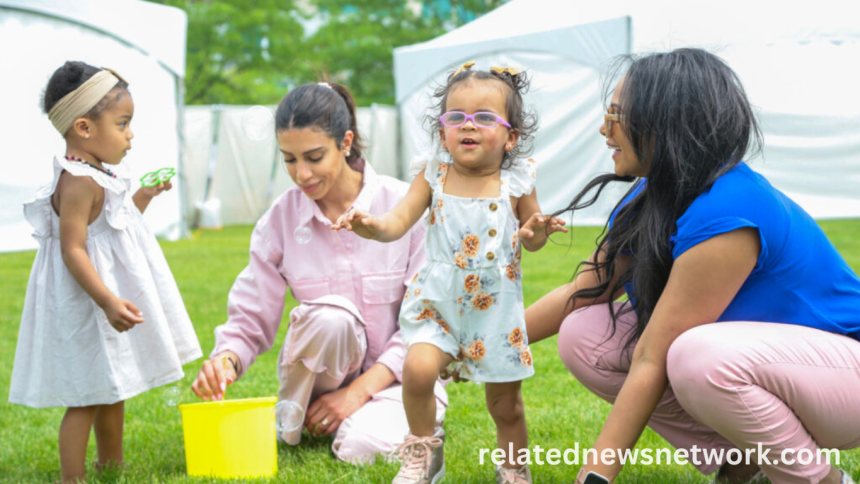Creativity serves as the heartbeat of humanity. It is through creative expression that we bridge cultural gaps, challenge norms, and craft stories that resonate across generations. Whether through art, music, literature, or technological innovation, creativity knows no boundaries. However, its true power is unleashed when it intertwines with community—forming a collective spirit that drives progress and nurtures connection. This article explores the dynamic relationship between creativity and community, highlighting how their synergy fosters a space for growth, learning, and inspiration.
The Power of Creative Expression
At its core, creativity is about bringing something new into existence. It is the process of transforming ideas, experiences, or emotions into tangible forms that engage the mind and soul. Creative expression can manifest in countless ways, from painting and sculpture to writing and performing arts. What makes creativity so vital is its ability to reflect the complexities of life while offering fresh perspectives on the world. It allows individuals to connect with their own inner worlds and, more importantly, with others.
When creativity flourishes, it brings about a sense of belonging and empowerment. Individuals who create feel a deeper connection to their work, and through that work, they contribute to the larger fabric of society. Creativity also sparks innovation—offering solutions to problems, generating new opportunities, and challenging conventional thinking. The very act of creating allows people to explore possibilities and reach beyond the confines of the ordinary.
Community as the Foundation for Creativity
Creativity often thrives in environments that nurture collaboration and collective engagement. While individual talent is essential, the presence of a supportive community amplifies the potential for growth. Communities, whether local or global, provide the infrastructure for creative ideas to flourish. They offer spaces for collaboration, feedback, and encouragement, allowing individuals to push their boundaries and refine their work.
Communities also offer diverse perspectives. A collaborative setting enables the exchange of ideas, experiences, and expertise. This diversity leads to richer, more dynamic creative outcomes. For example, a community of artists may share techniques, resources, and inspiration, resulting in new styles and movements that reflect the evolving culture. Likewise, writers, musicians, or scientists draw inspiration from the shared knowledge and experiences of their peers, often discovering fresh pathways for exploration.
Moreover, the communal nature of creativity encourages accountability and growth. Being part of a creative group provides a sense of purpose and motivation, as individuals are encouraged to share their work and contribute to the collective vision. Communities instill a sense of responsibility, driving members to continue developing their craft while supporting others in their journey.
Bridging Gaps through Shared Creative Spaces
Creative spaces, whether physical or digital, have become essential for fostering a sense of community among creators. These spaces are more than just venues for work; they are meeting points for collaboration and inspiration. Makerspaces, artist collectives, writing workshops, and online platforms allow individuals to connect, share, and learn from one another. In these spaces, the collective energy of creators contributes to the overall success of each individual.
Physical creative hubs are often located in urban areas, where artists, musicians, designers, and others converge to form vibrant creative communities. These hubs serve as incubators for new ideas and experimental works. Artists are given the tools and resources to push boundaries and take risks, surrounded by others who share similar passions and aspirations.
Read More : Embracing the Journey to Wealth and Abundance
The digital age has expanded these opportunities, with online platforms enabling creators from all over the world to interact, collaborate, and showcase their work. These virtual communities break down geographic barriers, offering unprecedented access to global networks of creative individuals. From online workshops and social media groups to virtual exhibitions and collaborative projects, digital spaces offer the same sense of belonging and creative camaraderie as their physical counterparts.
The Role of Education in Fostering Creativity
Education plays a pivotal role in nurturing creativity and fostering a sense of community. Schools, universities, and learning institutions provide the foundation for creative growth by offering both formal and informal spaces for exploration. These environments encourage students to think critically, experiment, and challenge the status quo.
Moreover, educational institutions often serve as hubs for creative communities. By connecting students with like-minded individuals and mentors, they create networks that support both personal and professional development. Students are not only taught technical skills but also how to collaborate effectively, share ideas, and embrace feedback. This emphasis on community-driven creativity prepares individuals for real-world creative endeavors, where teamwork and shared goals are often essential to success.
Celebrating Diversity through Creative Collaboration
One of the most powerful aspects of creative communities is their ability to celebrate diversity. Creativity, by its nature, thrives on differences—whether cultural, social, or ideological. When individuals from diverse backgrounds come together, the resulting collaborations are often groundbreaking. These partnerships challenge assumptions, broaden perspectives, and spark new ideas that would not have been possible in more homogenous settings.
Art, music, literature, and other forms of creative expression have historically played significant roles in advocating for social change, human rights, and unity. Creative communities that embrace diversity have the unique opportunity to be at the forefront of these movements, amplifying voices that might otherwise go unheard and creating works that inspire social progress.
By celebrating diversity, creative communities foster environments where people feel safe to express themselves without fear of judgment. This inclusivity enables creativity to flourish in its most authentic form, where individuals are free to explore, experiment, and grow without limitations.
The Ripple Effect: Creativity in the Wider Community
While creative communities have a profound impact on their members, the influence of creativity extends far beyond their immediate sphere. Creative works resonate with audiences, inspire change, and contribute to the broader cultural fabric. When artists, musicians, and other creators share their work, they initiate conversations, spark new ideas, and bring attention to pressing issues in society.
The ripple effect of creativity can be seen in how it impacts individuals on a personal level. A piece of music, a novel, or a painting can evoke emotions, challenge perceptions, and inspire action. The influence of creativity reaches beyond the creator, touching the lives of those who engage with it. As these ideas spread through communities, they inspire others to contribute their voices, talents, and perspectives.
In a larger sense, the continued growth of creative communities has the power to reshape societies. It fosters cultures of innovation, empathy, and understanding, building bridges that connect people from different walks of life. Creative communities, therefore, are not just spaces for artistic expression but catalysts for positive societal transformation.
Frequently Asked Questions
What is the connection between creativity and community?
Creativity flourishes when combined with community, as collaboration, shared ideas, and diverse perspectives fuel innovation and growth.
How can communities support creative individuals?
Communities provide space for collaboration, feedback, and resources, creating an environment where creativity can thrive.
What are creative spaces?
Creative spaces are environments, both physical and digital, where artists, creators, and innovators collaborate and express their ideas freely.
Why is diversity important in creative communities?
Diversity brings a variety of perspectives and experiences, enriching creative works and fostering innovation through different ideas and approaches.
How do creative communities inspire societal change?
Creative communities create works that challenge societal norms, raise awareness of important issues, and inspire social movements.
Can online communities foster creativity?
Yes, online platforms enable creators to connect globally, collaborate, and showcase their work, transcending geographic boundaries.
How can education contribute to creativity?
Educational institutions nurture creativity by offering spaces for exploration, promoting critical thinking, and fostering collaboration between students and mentors.
What role does creative collaboration play?
Creative collaboration combines the strengths of multiple individuals, leading to richer, more innovative outcomes that would be difficult to achieve alone.
Conclusion
Creativity and community are intertwined forces that drive innovation, growth, and positive change. The synergy between individuals and their shared environments nurtures unique expressions, challenges societal boundaries, and creates a sense of belonging. Through collaboration and diverse perspectives, creativity becomes a catalyst for social transformation. Communities that embrace creativity not only support individual growth but also contribute to the collective advancement of culture, art, and knowledge.









